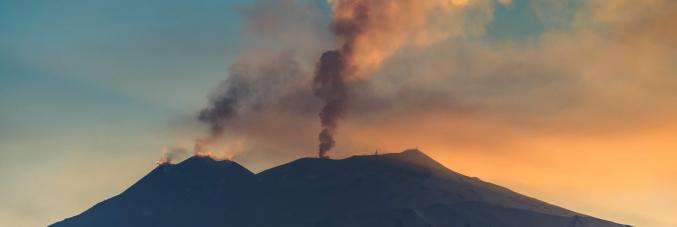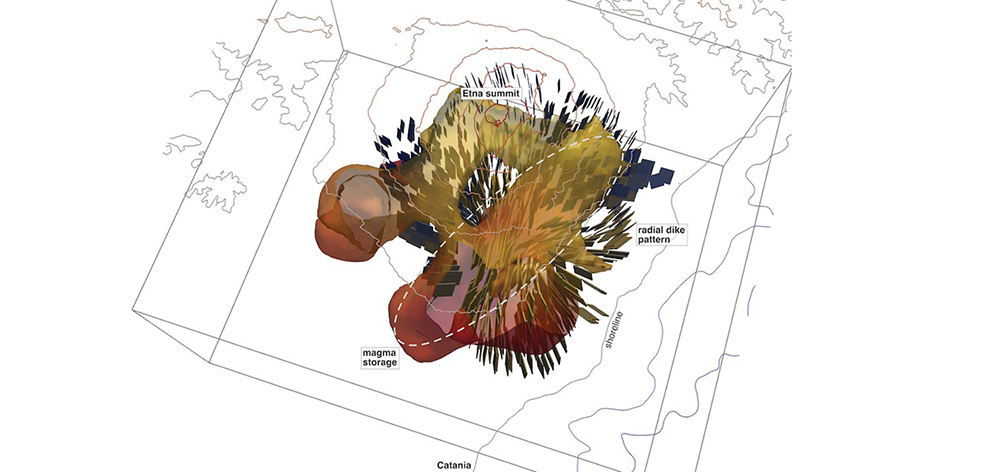
Secrets of magma: the crust of Etna unveiled by researchers from Padua
27.05.2025
A team of researchers from the University of Padua, led by Gianmarco Del Piccolo and Manuele Faccenda, has developed a structural model of the Earth's crust beneath Mount Etna, using an innovative seismic tomography method based on over 37,000 seismic signals collected between 2006 and 2016.
Beneath the surface of Mount Etna, the largest and most active volcano in Europe, there is magma in constant motion that occasionally finds escape routes to the surface, causing spectacular eruptions. Seismology, which studies seismic waves in the subsurface, is essential for understanding these phenomena.
The method used by researchers from the Department of Geosciences at the University of Padua allowed them to map the orientation of fractures and estimate the state of stress at depth with unprecedented detail. Moreover, the technique used, thanks to sophisticated statistical analysis, also enabled the assessment of the uncertainty level of the results, making the interpretations more reliable.
"The state of stress influences a wide variety of geophysical phenomena such as earthquakes and volcanic eruptions, but at the same time remains a great unknown in many crustal environments. The published study paves the way for the possibility of inverting seismic data to produce tomographic reconstructions of the stress field properties," comments Gianmarco Del Piccolo, corresponding author of the research and PhD student at the Department of Geosciences at the University of Padua.

The study, published in "Communications Earth & Environment," revealed the existence of a network of vertical dikes, fractures filled with magma, extending between 6 and 16 kilometres in depth. This radial network acts as a system of preferential paths for magma ascent, explaining eruptions from the summit craters and lateral vents of Etna. Observations also suggest that this area likely hosts a deep magmatic system characterised by high fluid pressures.
The technique has allowed the mapping of fracture orientation and the estimation of the state of stress at depth, enhancing the understanding of geophysical processes such as earthquakes and volcanic eruptions. According to Manuele Faccenda, coordinator of the research and professor at the Department of Geosciences, this method could have a significant impact on the predictability of magma and fluid migrations in various crustal environments, including geothermal and petroleum fields.



